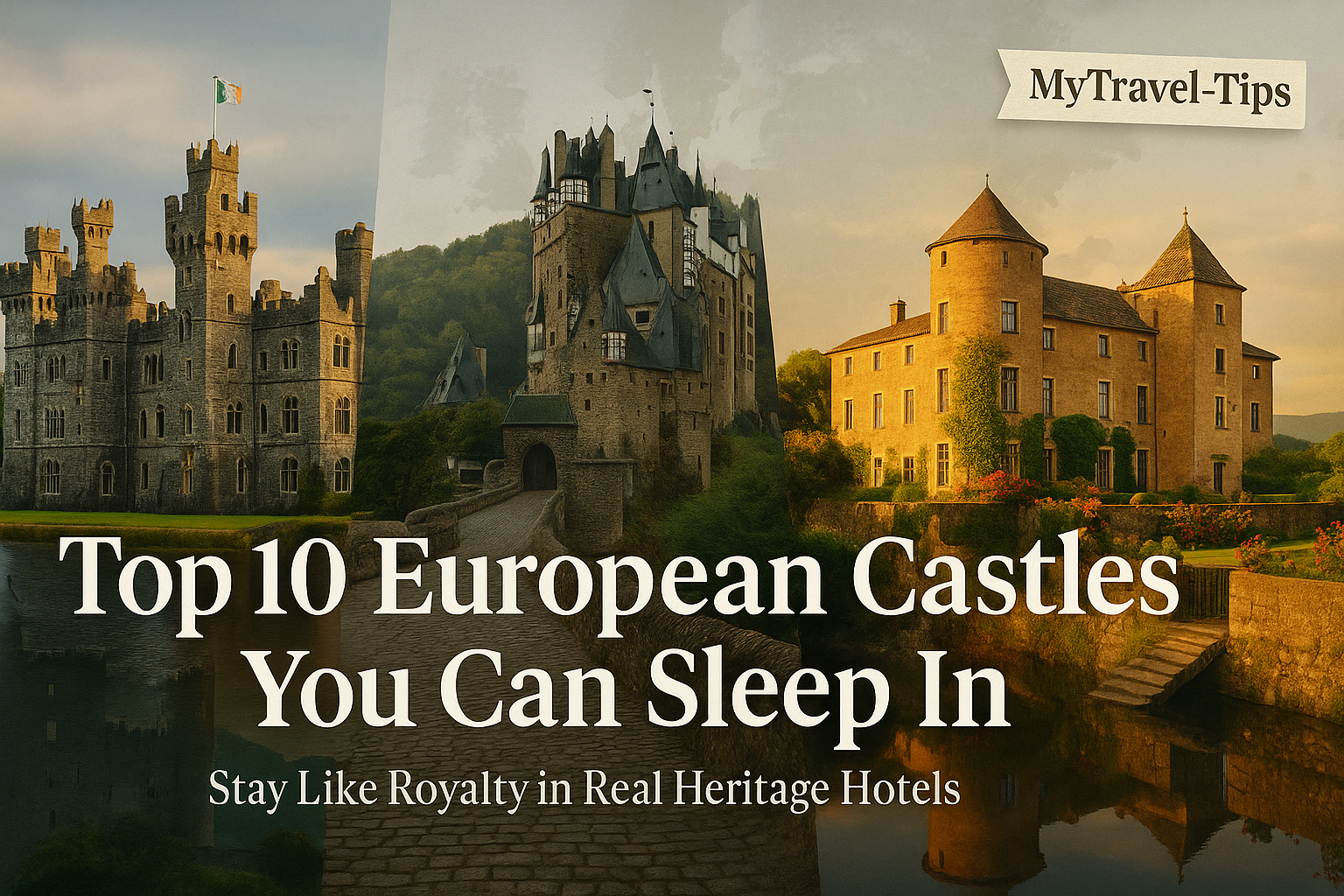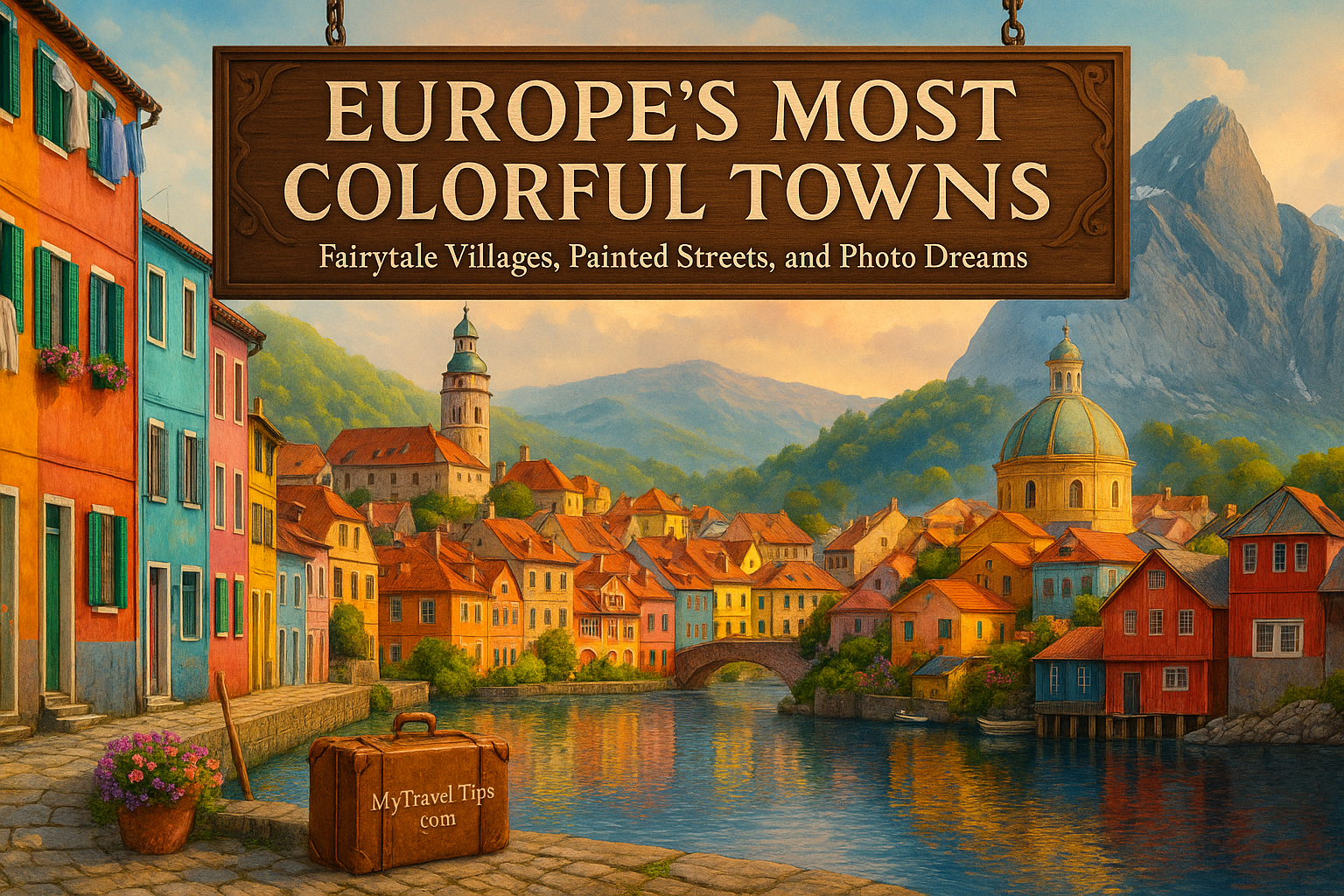Top 10 Hidden Villages in Europe – Secret Escapes with Fairytale Charm
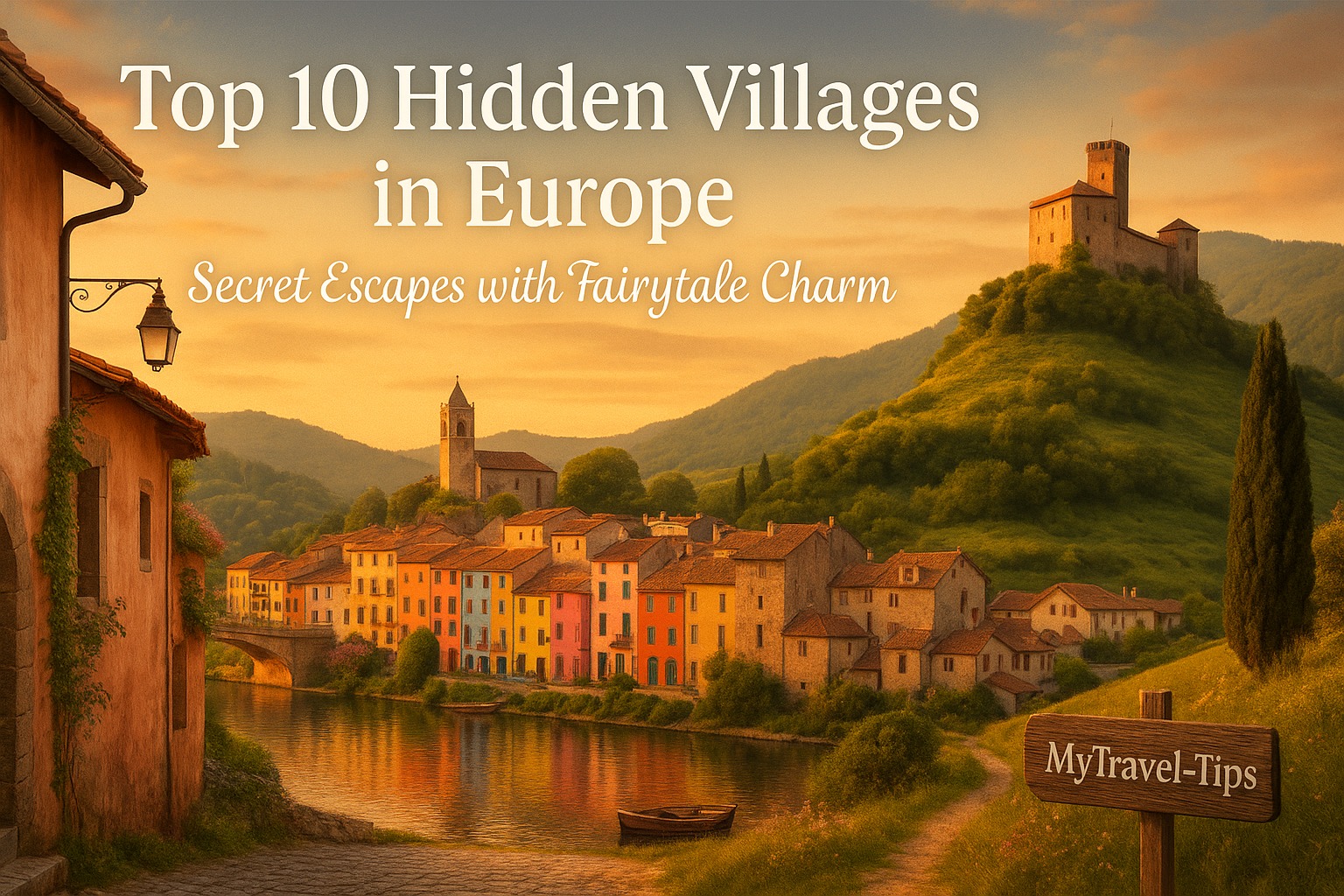
Top 10 Hidden Villages in Europe – Culture & Beauty
Tired of the usual European hotspots? There’s a world of untouched charm waiting in the continent’s hidden villages. From cobbled lanes to cliffside hamlets, these are places where time slows down and culture whispers from every stone. Whether you crave medieval mystique, alpine quiet, or seaside soul, this handpicked list of the top 10 hidden villages in Europe will take you off the tourist radar — and straight into fairytales.
These remote gems often blend fairytale villages in Europe with authentic cultural roots. Many are protected heritage zones or nestled deep in alpine valleys and coastal fjords. This guide not only spotlights their magic but also helps you explore them with ease, using public transport, hiking routes, or regional day trips from bigger cities. Let’s unlock Europe’s most enchanting secrets.
🔎 Explore These Fairytale Villages – Clickable TOC
- 1. 🏡 Why Visit Hidden Villages in Europe?
- 2. 📋 How We Chose These Secret Spots (Cultural + Visual Criteria)
- 3. 🌍 Top 10 Hidden Villages in Europe
- 4. 🎨 Art, Folklore & Local Stories
- 5. 📸 Travel Tips for Discovering Hidden Places
- 6. 🧭 Final Reflections + Map Pins & Link Guide
Why Visit Hidden Villages in Europe?
Europe’s hidden villages are where you find the soul of the continent — places untouched by mass tourism, where traditions survive, and stories linger in the stones. These villages, often bypassed by crowds, offer a glimpse into the continent’s past and the authentic rhythm of local life. If you’ve already seen the castles and capital cities, it’s time to discover the beauty tucked between mountains, lakes, and winding roads.
Many of these hidden places in Europe have preserved their architecture, dialects, and customs for centuries. From fairy-tale cottages in Portugal to cliff-hanging hamlets in France, each destination is a living postcard. Whether you’re chasing inspiration, peace, or timeless culture, these hidden villages offer something no urban itinerary can.
What makes them even more special is how accessible they are with just a bit of curiosity — a short train ride, a local bus, or a winding drive into the hills. They’re perfect for slow travelers, photographers, couples, and anyone searching for a meaningful escape. Plus, many are surprisingly affordable and sustainable, staying true to regional life while welcoming visitors warmly.
- 🌍 Authentic culture untouched by mass tourism
- 🏘️ Well-preserved historic architecture and heritage
- 💶 Affordable stays and local food experiences
- 🚉 Reachable by public transport or scenic road trips
- 🎒 Ideal for couples, slow travelers, and photo explorers
✨ Did you know? Many of Europe’s most fairytale villages are under 1,000 residents — making them ideal for peaceful stays, heritage walks, and deep cultural immersion.
How We Chose These Secret Spots (Cultural + Visual Criteria)
With thousands of towns across Europe, we focused on villages that are truly hidden from mainstream travel yet rich in architecture, natural beauty, and living traditions. These are places where the air is crisp, the colors real, and the culture alive — perfect for travelers seeking meaningful, visual, and budget-friendly experiences.
Each village featured in our list meets at least 4 of 6 cultural and scenic benchmarks. Whether it’s alpine fairytale scenes or sun-drenched coastal charm, they represent the best of fairytale villages in Europe with very low tourism saturation.
- 🏰 Historic Character: Medieval, traditional, or heritage-protected architecture
- 🌄 Scenic Landscape: Located near mountains, lakes, cliffs, or remote natural settings
- 👣 Low Tourist Footfall: Not part of regular Europe package circuits
- 🎭 Cultural Events: Local folklore, festivals, or traditions still celebrated today
- 🚶♂️ Walkability: Small enough to explore by foot; no large highways through center
- 🎒 Backpacker Access: Reachable by regional transport or self-drive route
🧩 Tip: Many of these hidden villages have fewer than 500 residents and remain absent from major tour operator maps — ideal for peaceful cultural stays.
1. Giethoorn, Netherlands – The Village with No Roads
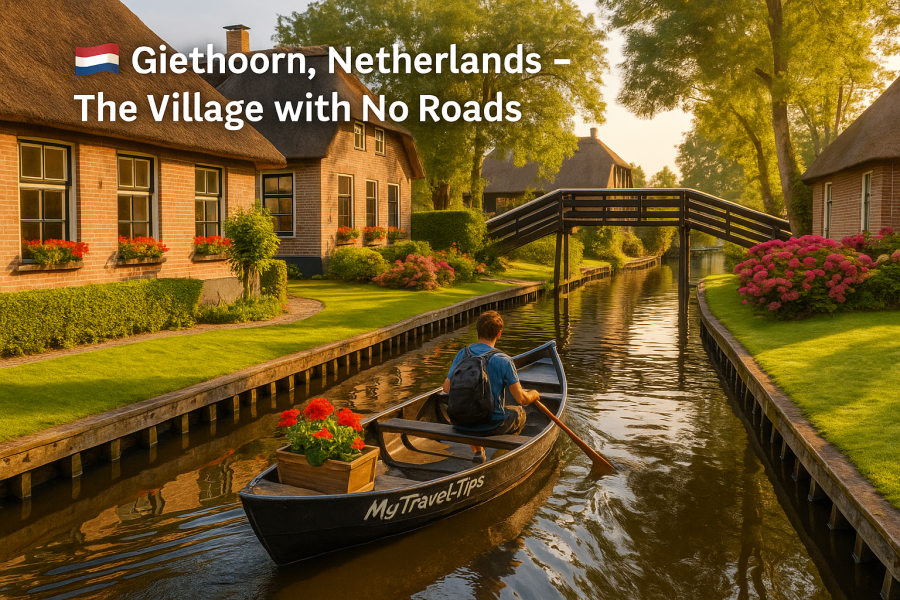
Nestled in the Overijssel province, Giethoorn is often called the “Venice of the North” — but without the crowds. This hidden village in Europe replaces roads with canals, and cars with whisper-quiet electric boats. Thatched-roof cottages, arched wooden bridges, and wildflower gardens create a dreamlike setting that’s both serene and visually spectacular.
While popular with Dutch locals, Giethoorn remains largely overlooked by international travelers, especially outside of summer. A slow boat ride or canal-side walk reveals a peaceful world where time has slowed and community thrives. You can rent a boat, stay in a water-facing guesthouse, and dine on homemade Dutch pancakes — all without ever hearing a car engine.
📍 Quick Facts:
• Country: Netherlands
• Region: Overijssel
• Known For: Canal streets, boat life, no cars
• Best Season: Late spring or early autumn
• Access: Train to Steenwijk, then 15-min bus or bike ride
💡 Travel Insight: Giethoorn enforces a no-car zone within the old village core. Visitors must explore by foot, bike, or electric boat — adding to its peaceful, photogenic charm. Booking a local B&B also helps sustain the village’s small-scale tourism economy.
2. Èze, France – Cliffside Village with a View to Eternity?
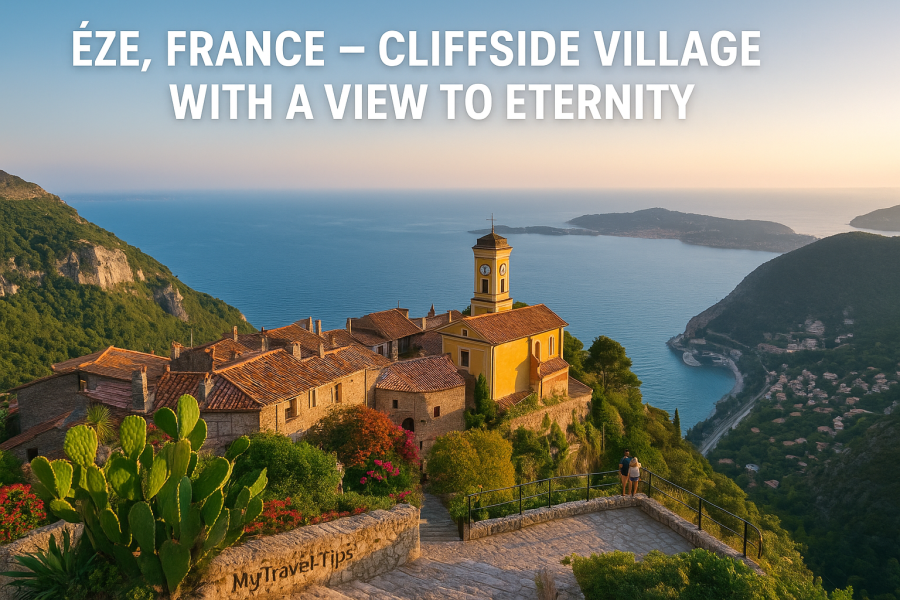
Perched high above the French Riviera between Nice and Monaco, Èze is one of France’s most spectacular hidden hilltop villages. Its narrow cobbled alleys twist through medieval stone homes, artisan shops, and perfumeries, eventually leading to panoramic viewpoints over the Mediterranean Sea. Èze is small but rich in heritage, art, and serenity — far quieter than the coastal cities it overlooks.
Though it lies just minutes from some of Europe’s most luxurious coastlines, Èze feels a world apart. The village’s cactus-filled exotic garden, clifftop chapel, and legendary sea view from the castle ruins attract artists, writers, and seekers of solitude. Its compact size makes it ideal for a half-day or overnight stay in your fairytale village in Europe itinerary.
📍 Quick Facts:
• Country: France
• Region: Provence-Alpes-Côte d'Azur
• Known For: Medieval hilltop lanes, Mediterranean views
• Best Season: April to October
• Access: Bus from Nice or train + short hike uphill
💡 Travel Insight: Arrive early in the morning to avoid tour groups. Most of the charm lies in quiet wandering, so give yourself time to linger, explore art galleries, or have lunch with a sea view. Èze is also home to one of France’s oldest perfumeries — Fragonard.
3. Dinant, Belgium – Clifftop Citadel and Saxophone Roots
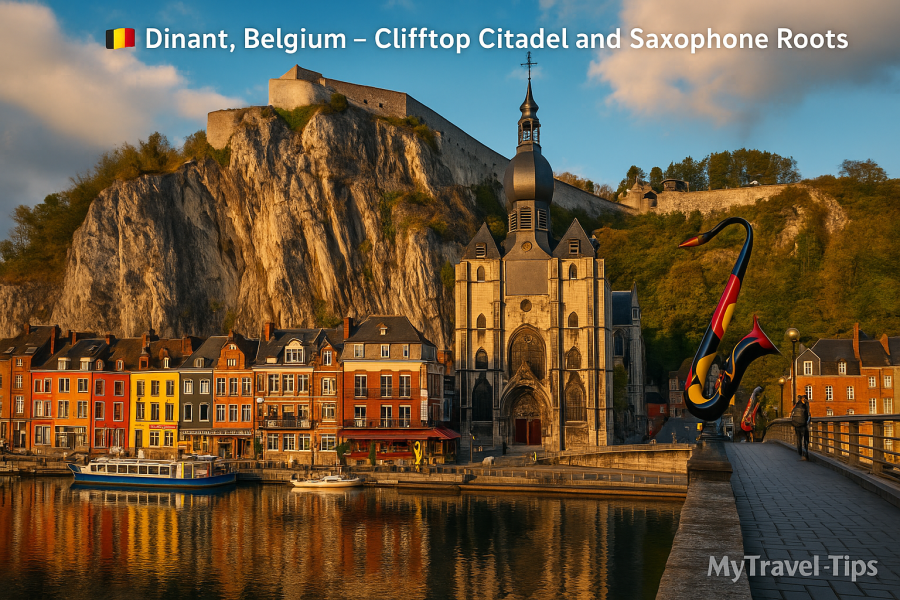
Nestled between steep cliffs and the River Meuse, Dinant is one of Belgium’s most visually striking hidden gems. Known for its towering clifftop citadel, onion-domed church, and colorful riverside homes, Dinant feels like a real-life painting. It’s also the birthplace of Adolphe Sax — inventor of the saxophone — and the village pays homage with sax-themed bridges and art installations.
Despite its dramatic beauty, Dinant remains off the radar for most European travelers. A short train ride from Brussels or Namur makes it perfect for a cultural day trip. The panoramic cable car to the fortress, riverside cafés, and peaceful atmosphere combine nature, music, and medieval architecture — making Dinant a unique hidden place in Europe for history lovers.
📍 Quick Facts:
• Country: Belgium
• Region: Wallonia
• Known For: Clifftop fortress, saxophone legacy, riverside charm
• Best Season: May to September
• Access: Direct train from Namur or Brussels (1–1.5 hrs)
💡 Travel Insight: For the best views, take the cable car up to the citadel at golden hour. Many travelers miss the riverside walking trails and saxophone-themed art displays that stretch along both banks — don’t skip them!
4. Piódão, Portugal – Stone Village in the Mountains
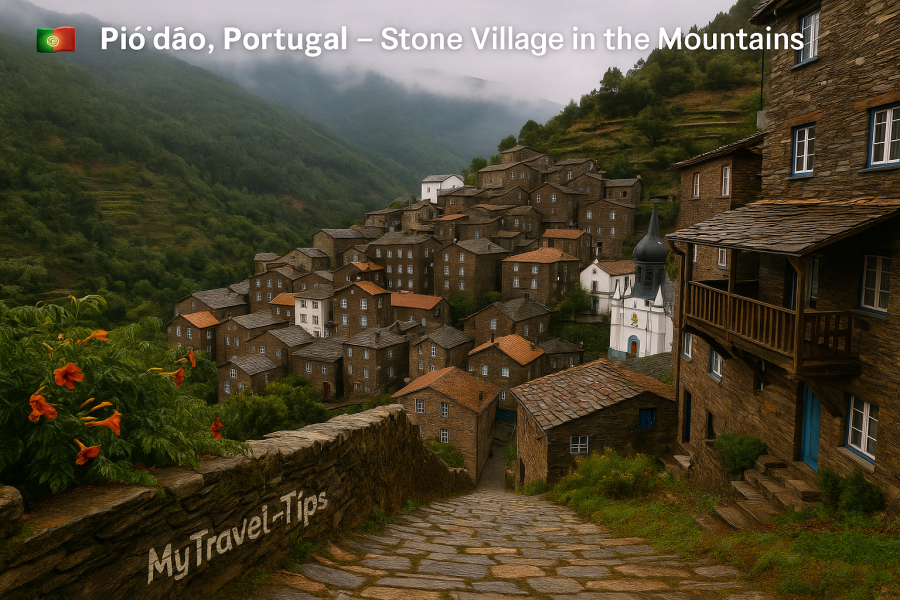
Tucked deep within the Serra do Açor mountains of central Portugal, Piódão is a remote village built almost entirely of schist stone. With slate-roofed homes stacked tightly on steep hillsides and narrow cobbled alleys winding between them, Piódão feels like a hidden world. Its whitewashed church stands in striking contrast to the dark stone around it, creating a surreal but peaceful atmosphere.
This fairytale village in Europe remains underexplored due to its secluded location, but that’s exactly what makes it special. Visitors are rewarded with silence, timeless architecture, hiking trails, and traditional Portuguese hospitality. It’s a destination for photographers, hikers, and travelers seeking a quiet encounter with heritage and nature.
📍 Quick Facts:
• Country: Portugal
• Region: Serra do Açor (Coimbra District)
• Known For: Slate architecture, remote charm
• Best Season: Spring and early autumn
• Access: Car or regional bus from Coimbra (2.5 hrs)
💡 Travel Insight: Piódão lights up in the evening with golden-yellow lamps reflecting off slate walls — a magical scene for photographers. It’s also part of Portugal’s “Aldeias Históricas” (Historical Villages Network), a great resource for offbeat travelers.
5. Hallstatt, Austria
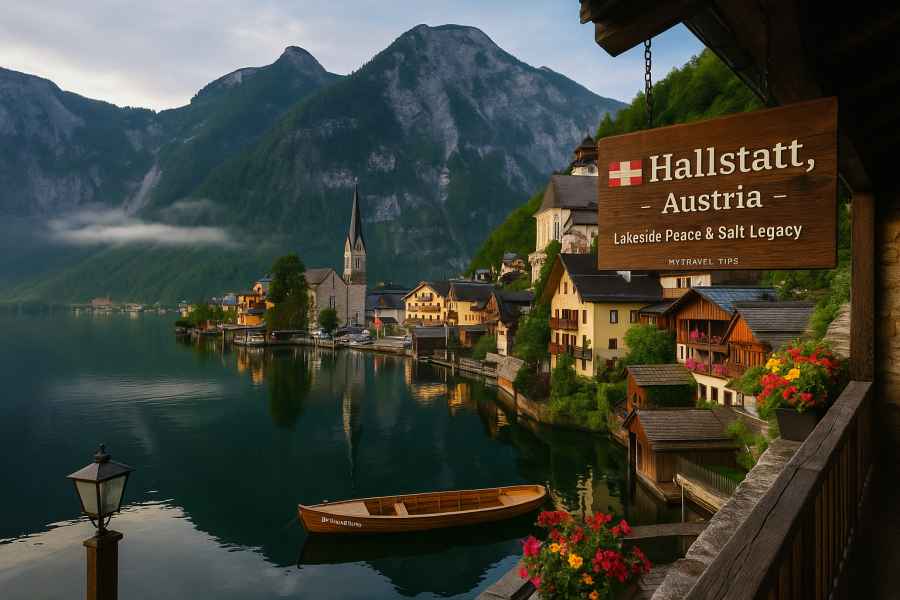
Before it became an Instagram sensation, Hallstatt was a quiet lakeside village known for salt mining and alpine heritage. Tucked into the Salzkammergut region of Austria and wedged between towering mountains and a pristine lake, it was once only reachable by boat or steep footpath. That remoteness helped Hallstatt preserve its charm for centuries — making it a true **hidden gem in Europe** until recent fame brought it into the spotlight.
Despite its popularity, visiting during the off-season or early morning still feels magical. Wooden homes with flower boxes lean into the lake, and the entire village reflects beautifully in the water at sunrise. Hallstatt’s salt mines, historic churchyards, and Alpine trails offer deep cultural and natural experiences beyond the photo ops. It’s a village best explored on foot — slowly, silently, and with curiosity.
📍 Quick Facts:
• Country: Austria
• Region: Salzkammergut (Upper Austria)
• Known For: Lakeside views, salt mine, Alpine charm
• Best Season: March to May or October
• Access: Train to Hallstatt Station + ferry across lake
💡 Travel Insight: Skip the midday rush by staying overnight. Walk the Echerntal trail for stunning alpine views and visit the ancient bone chapel to uncover Hallstatt’s unique burial traditions and UNESCO roots.
6. Gásadalur, Faroe Islands – Waterfall to the Sea
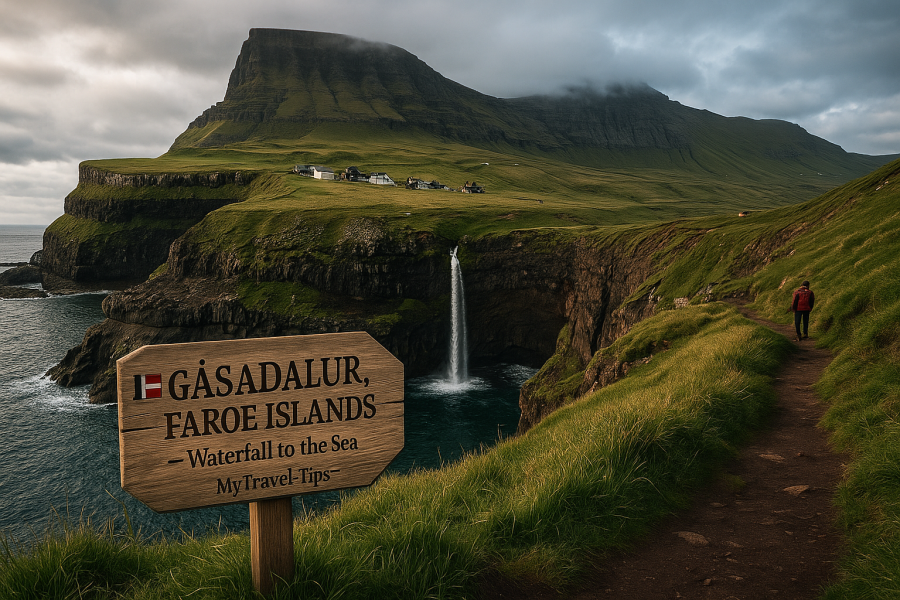
Hidden away on the western edge of Vágar Island, Gásadalur is one of the most isolated and visually stunning villages in Europe. With just a handful of turf-roofed houses perched on a grassy plateau, it overlooks the roaring Atlantic Ocean — and most famously, the breathtaking Múlafossur Waterfall plunging directly into the sea. Until 2004, the only way to reach this village was by climbing over a steep mountain pass.
Today, a single-lane tunnel connects Gásadalur to the rest of the Faroe Islands, yet it retains its untouched aura. Sheep outnumber people, and dramatic cliffs rise in every direction. This is not a fairytale village with cafés or gift shops — it's raw, elemental beauty, perfect for quiet reflection, nature photography, and understanding what it truly means to be remote in Europe.
📍 Quick Facts:
• Territory: Faroe Islands (Denmark)
• Island: Vágar
• Known For: Ocean waterfall, isolation, grass-roofed homes
• Best Season: June to September
• Access: Tunnel from Bøur via rental car or private tour
💡 Travel Insight: There are no hotels in Gásadalur, only local guesthouses. For the best light and least wind, visit just after sunrise. The sound of the ocean and waterfall is all you’ll hear — bring snacks, layers, and respect the peace.
7. Reine, Norway – Arctic Silence Among the Fjords
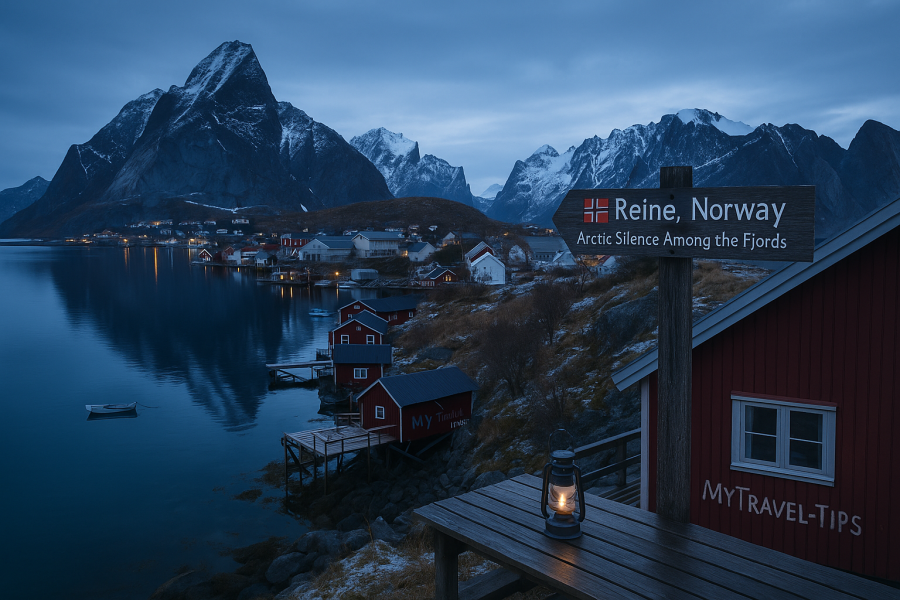
Located above the Arctic Circle in Norway’s Lofoten archipelago, Reine is a postcard-perfect fishing village surrounded by jagged peaks and deep fjords. Red and yellow rorbuer (fishermen’s cabins) line the crystal-clear Reinefjorden, reflecting the midnight sun in summer or glowing faintly under the northern lights in winter. This serene Arctic settlement blends dramatic nature with Nordic simplicity.
Reine has fewer than 400 residents and remains one of Europe’s most peaceful hidden villages, perfect for hiking, kayaking, or simply staring at the surreal beauty around you. It's also a base for climbing the **Reinebringen trail**, which offers one of the most iconic panoramic views in all of Scandinavia. Despite rising fame, its remote location keeps crowds away most of the year.
📍 Quick Facts:
• Country: Norway
• Region: Lofoten Islands
• Known For: Arctic fjords, rorbuer cabins, northern lights
• Best Season: May to September (midnight sun) / Feb–Mar (aurora)
• Access: Fly to Leknes, drive via E10 to Reine
💡 Travel Insight: Reine’s red cabins can be rented as boutique lodges — many include kayaks or sauna access. Book early and prepare for full self-catering if visiting in winter, when shops and cafés may be closed.
8. Albarracín, Spain – Pink Walls and Moorish Echoes
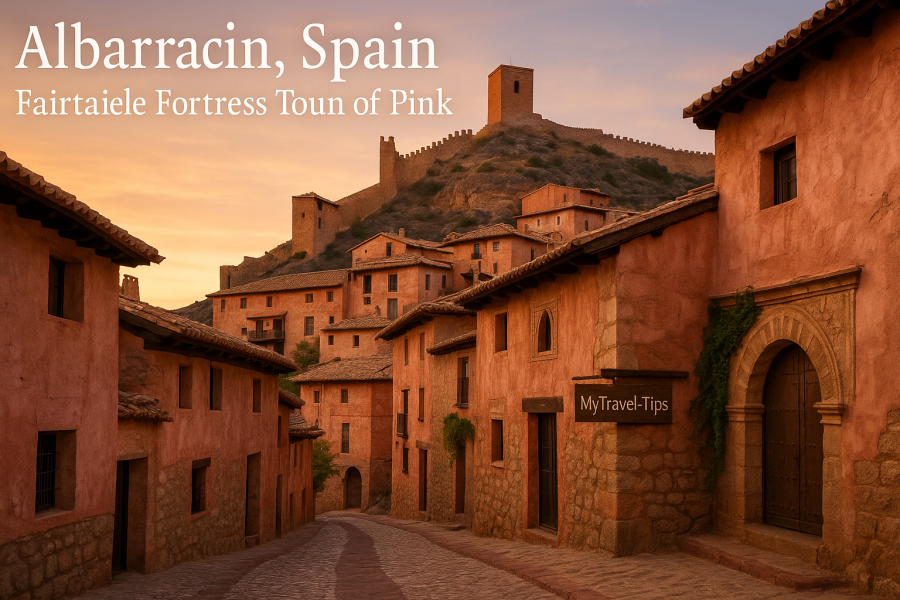
Rising from the red rock cliffs of the Sierra de Albarracín, the village of Albarracín looks like a painting from medieval Spain. Its terracotta-pink walls, ancient Moorish towers, and winding stone streets have earned it a reputation as one of Spain’s most beautiful and best-preserved villages. Yet, it remains blissfully absent from mainstream tourist itineraries.
A walk through Albarracín is a walk through centuries — past Gothic cathedrals, defensive walls, and timber-framed homes clinging to narrow passageways. The landscape around it is equally captivating, with rugged limestone canyons and pine forests. It’s a dream for hidden village explorers who love heritage, photography, and Spain’s quiet heartland.
📍 Quick Facts:
• Country: Spain
• Region: Aragón (Teruel Province)
• Known For: Pink walls, Moorish history, hilltop fortress
• Best Season: March to June or September to October
• Access: Drive from Teruel (40 mins) or Zaragoza (2.5 hrs)
💡 Travel Insight: Albarracín has strict preservation rules — even satellite dishes are banned from visible spots. Visit mid-week for near-empty streets and golden sunset light hitting the pink stone walls. Local jamón and cheese are must-tries!
9. Gruyères, Switzerland – Cheese, Castles & Alpine Calm
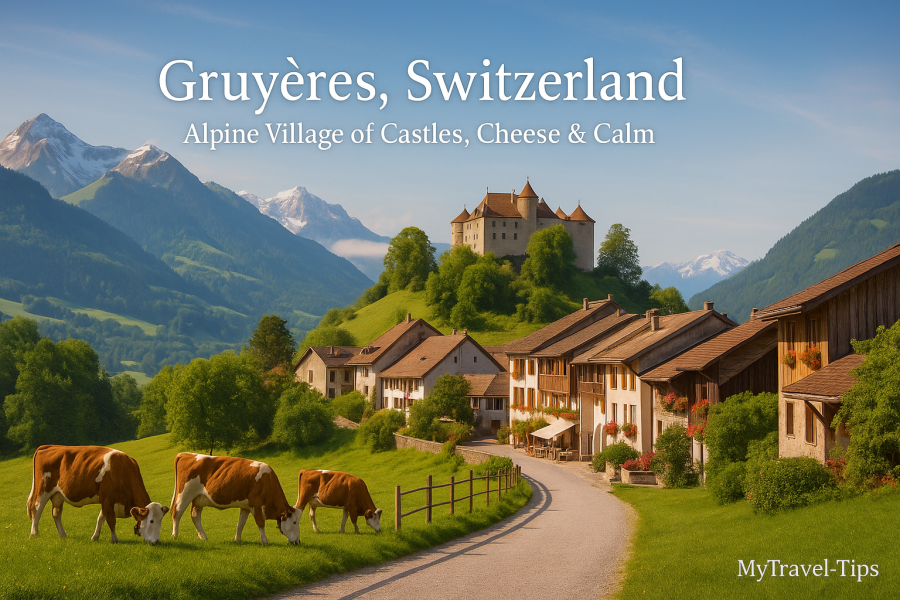
Tucked in the green foothills of the Fribourg Prealps, Gruyères is a storybook village that blends medieval architecture with world-famous Swiss cheese. Known for its hilltop castle, cobblestone promenade, and backdrop of rolling pastures, Gruyères offers a perfect mix of history, culture, and quiet alpine living — all in one compact, easily walkable place.
While popular with cheese lovers and day-trippers, Gruyères retains the feel of a hidden escape, especially in the early morning or late afternoon. You can tour the Gruyères Castle, visit the HR Giger alien art museum, and watch cheese-making in action at La Maison du Gruyère — all within a few minutes’ stroll. It’s ideal for slow travel and alpine calm without venturing far into the wilderness.
📍 Quick Facts:
• Country: Switzerland
• Region: Fribourg Canton
• Known For: Gruyère cheese, castle, alpine village life
• Best Season: May to September
• Access: Train from Montreux or Lausanne (1.5 hrs)
💡 Travel Insight: Stay overnight in Gruyères to enjoy its peaceful twilight charm after the day-trippers leave. Book a fondue dinner at a local inn and wake up to views of cows grazing under the castle — it’s as Swiss as it gets.
10. Bosa, Sardinia – Color by the River
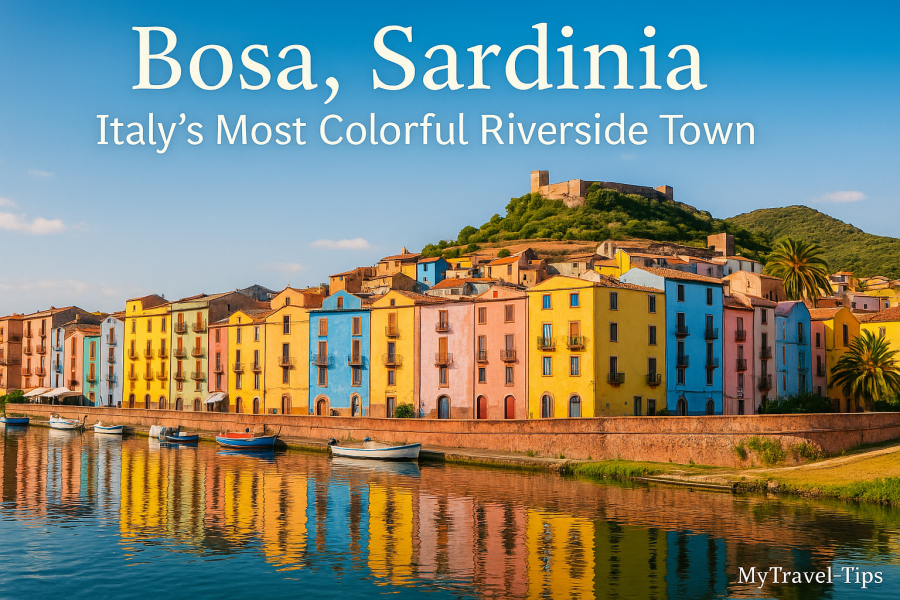
Set along the Temo River in western Sardinia, Bosa is a pastel-colored dream rarely seen on mainland travel lists. Its stacked rainbow buildings rise gently from the riverside toward the old castle, with fishing boats bobbing quietly in the water. The air smells of sea breeze and history, with the island’s ancient culture baked into every step of its cobbled streets.
Bosa’s quiet charm lies in its contrasts — a mix of coastal life, medieval towers, art studios, and peaceful beaches nearby. Despite its cinematic beauty, it remains one of Italy’s most underrated hidden villages. Perfect for road-trippers, photographers, or anyone seeking a unique Sardinian experience beyond the beaches of Cagliari or Costa Smeralda.
📍 Quick Facts:
• Country: Italy
• Region: Sardinia (Province of Oristano)
• Known For: Colorful riverside homes, Castello Malaspina, quiet charm
• Best Season: April to June or September
• Access: Drive from Alghero (1.5 hrs) or Oristano
💡 Travel Insight: Bosa is a painter’s palette at sunset. For sweeping views, walk up to Castello Malaspina — then enjoy aperitivo by the river, where time moves as slowly as the current.
Art, Folklore & Local Stories
What truly brings these hidden villages in Europe to life isn't just the architecture or landscapes — it’s the stories behind them. Every cobbled alley has heard laughter, loss, legends, and lullabies passed down over generations. From Moorish castles in Spain to pagan symbols carved into Nordic churches, these villages are guardians of Europe’s living folklore.
In Albarracín, elders still tell tales of Arab warriors and star-crossed lovers. In Gruyères, the castle walls whisper of feudal battles and ancient cheese rituals. The Faroe Islands’ Gásadalur once had just 16 residents, who would trek across the mountains with goods strapped to their backs — a way of life frozen in oral memory.
Local festivals, artisan crafts, and traditional songs are often the last threads holding cultural identity intact in these places. In Piódão, hand-embroidered linen is still made the same way it was a century ago. In Reine, the Lofoten Cod Festival brings together fishermen and families under Arctic skies.
- 🎭 Èze, France: Known for its perfumery traditions and medieval theatre festivals
- 🧀 Gruyères, Switzerland: Local legend says the Gruyère cow bell summons rain — farmers still believe it
- 🎶 Dinant, Belgium: Hosts saxophone parades to honor Adolphe Sax each year
- 🏰 Albarracín, Spain: Moorish ghost stories tied to the town’s iconic towers
- ⛪ Hallstatt, Austria: Bone house (Beinhaus) holds painted skulls of past villagers
🎨 Travel Insight: To experience true village culture, skip the selfie and ask about local legends. Many shop owners or innkeepers have stories far richer than any museum — you just have to listen.
Travel Tips for Discovering Hidden Places
Exploring hidden villages in Europe requires a different rhythm. These places aren’t made for tourists — they’re made for living slowly, breathing deeply, and observing quietly. Many are tucked away in valleys or along cliff roads with limited signage and public transport. But that’s what makes them special. Here’s how to make the most of your journey into Europe’s secret soul.
- 🗺️ Use local train & bus combos: Google Maps isn't always accurate — regional websites or apps offer better transport routes to small villages
- 🚗 Rent a small car: Compact rentals are best for narrow lanes in alpine or rural regions
- 🎒 Pack light + walk-ready: Many villages have steep streets and stairs with no vehicle access — comfy shoes matter
- 📸 Best photos: Shoot early morning or golden hour for magical light and fewer crowds
- 🌐 Go offline smart: Download offline maps or bookmark important routes in advance — mobile signals can be weak
🧭 Hidden Place Tip: Visit on weekdays for solitude, and always ask locals about the “non-tourist” walking trails — every village has at least one path that leads to a hidden viewpoint, spring, or shrine.
Final Reflections + Map Pins & Link Guide
From mountaintop hamlets to riverside dreamscapes, these hidden villages in Europe remind us that real magic still exists — off the map, beyond the capital cities, and inside places shaped by wind, stone, and time. Whether you're seeking silence, culture, nature, or beauty, the road less traveled through these villages offers all four — and then some.
Use this guide as a starting point. Explore slowly, support local artisans, and stay overnight when you can. Each of these secret villages has its own story waiting for you to enter — not just as a tourist, but as a respectful traveler and quiet observer.
- 📍 Giethoorn, Netherlands – Canals & quiet charm
- 📍 Èze, France – Sea views from stone alleys
- 📍 Dinant, Belgium – Music, cliffs, and citadel
- 📍 Piódão, Portugal – Slate houses in mountains
- 📍 Hallstatt, Austria – Lakeside peace & salt legacy
- 📍 Gásadalur, Faroe Islands – Ocean waterfall village
- 📍 Reine, Norway – Arctic fjords and rorbuer cabins
- 📍 Albarracín, Spain – Pink walls & Moorish whispers
- 📍 Gruyères, Switzerland – Cheese, castles, calm
- 📍 Bosa, Italy (Sardinia) – Rainbow houses on a river
📌 Want more unique journeys like this? Check our guide on Europe’s Most Colorful Towns or explore new routes in our Culture & History category.



